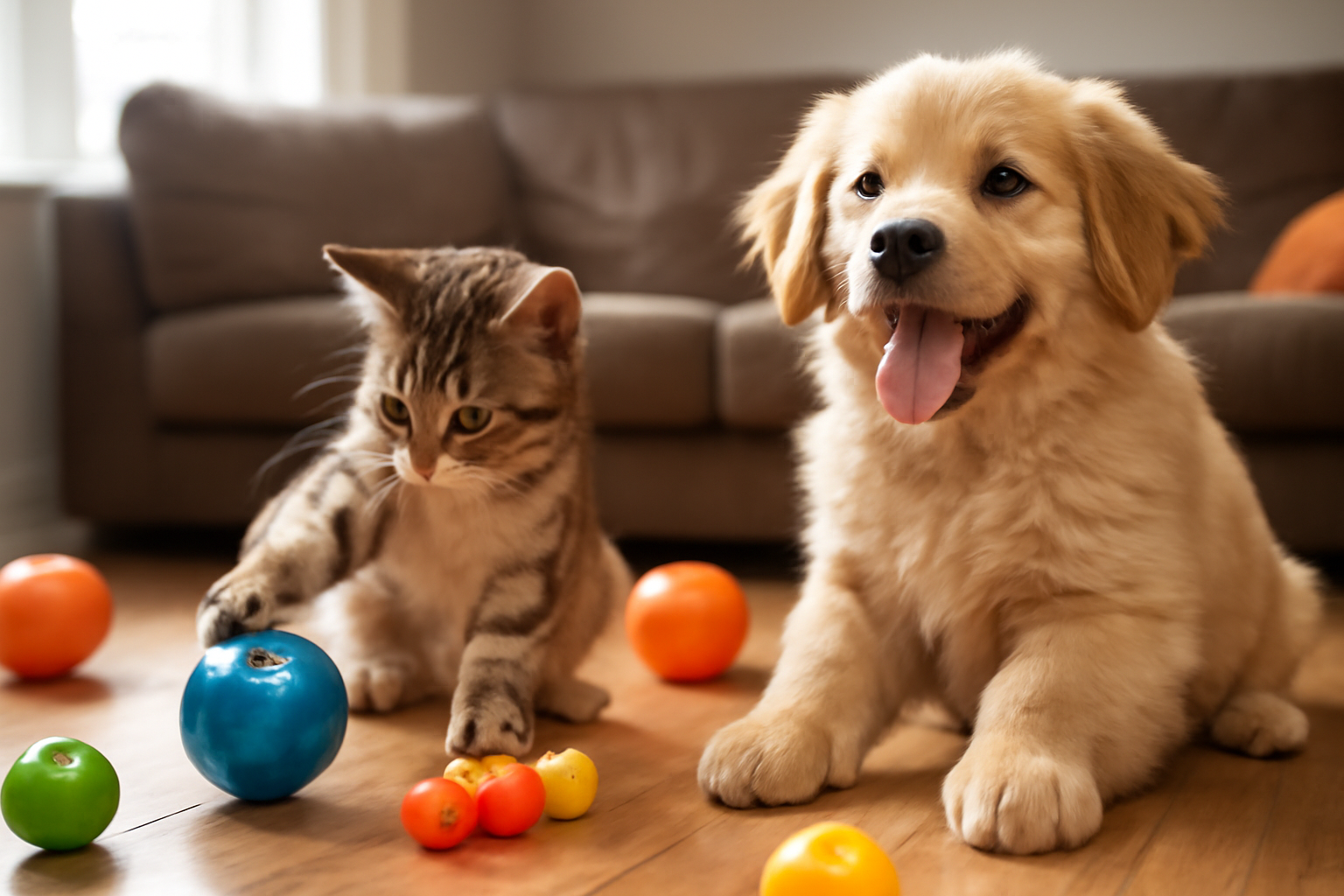Having toys and activities is very important for your pet’s health. It doesn’t matter if you have a little Chihuahua, an energetic Corgi, a calm Persian cat, or a large dog; choosing the right toys and playing with them helps prevent boredom, destructive behavior, or anxiety. This guide explains why this is important, suggests toys for each type and size of pet, discusses the benefits, provides safety tips, and shows examples of how to play with them.
The Importance of Toys for Pets
Playing with toys is very beneficial for pets. For dogs, it helps keep their hearts healthy, strengthens their muscles, and brings them closer to their owners. For cats, playing with toys makes them feel like they are hunting, encourages exercise, and reduces stress. Research shows that using special toys can lower stress levels and increase pet activity. Additionally, fun toys help dogs and cats become more intelligent, happier, and better behaved.
1. Varied Toys for All Types and Sizes of Pets
- Small Pets and Cats: Wand toys with feathers, treat-dispensing balls, and snuffle mats are great for playtime. Exercise wheels for cats help indoor felines expend energy.
- Medium-Sized Dogs (like Corgis): Tug ropes, remote-controlled balls, and food-dispensing toys keep both the body and mind engaged.
- Large Dogs: Automatic ball launchers are great for long fetch games and help with exercise.
- Senior Pets: Puzzle toys that are easy to solve help keep older animals’ minds active and prevent forgetfulness.
2. Advantages of Enrichment Toys
- Physical Vitality: Activities like tugging and fetching help strengthen muscles and expend energy healthily.
- Mental Agility: Puzzle toys and treat dispensers engage the brain and prevent boredom.
- Behavioral Balance: Interactive play reduces anxiety, discourages bad behaviors, and helps your pet adapt better.
- Bond Strengthening: Playing together increases trust and aids training with positive and fun interactions.
3. Safe Toy Selection
- Right Size: It’s important to avoid choking hazards; small balls are for small dogs like Chihuahuas, and larger toys are for big dogs like Labradors.
- Durable Toys: If your pet likes to chew, choose toys that don’t break easily to prevent ingestion of pieces.
- Interesting Toys: Rotate toys weekly to keep your pet engaged and interested.
- Safety First: Avoid toys with loose strings or small parts that your pet could swallow; always check toys for damages.
4. How to Introduce and Rotate Toys
- Start with sessions where an adult is present, especially with electronic or puzzle toys.
- Use rewards (like treats or praise) to encourage play.
- Swap out toys every few days to keep them feeling fresh and interesting.
5. Examples of Enrichment Routines
- Small Pets/Cats: 10 minutes of wand play in the morning + snuffle bowl in the evening → total of 20 minutes daily.
- Medium-Sized Dogs: 30 minutes of tug-of-war or fetch at midday + session with a treat-dispensing toy before bedtime.
- Large Dogs: Ball launcher session (10–15 minutes) + walk with a puzzle feeder (20 minutes).
- Senior Pets: Snuffle mat + gentle tugging and chewing play; 10 minutes in the morning and evening.
Interactive Toy Selection Guide
| Pet Type/Size | Toy Category | Suggested Frequency and Routine |
|---|---|---|
| Small Dogs/Cats | Wands, puzzles, wheels | 2 short sessions daily |
| Medium-Sized Dogs | Tug toys, puzzles, automatic balls | 1 fetch session + 1 puzzle per day |
| Large Dogs | Launchers, durable toys | 1 launcher session + daily chewing |
| Senior Pets | Gentle puzzles, soft chews | Gentle play & mental stimulation twice daily |
Essential Playtime Tips
- Mix thinking and play toys daily.
- Adjust playtime based on your pet’s age, energy, and health.
- Always supervise the first use of a new toy—remove damaged toys.
- Use toys as part of training, giving praise or treats when your pet behaves well.
- Rotate toys every 3–4 days to keep interest.
- Choose toys that match what your pet enjoys doing (e.g., scent toys for hunting dogs, prey-style toys for cats).
By thoughtfully using these strategies in your pet’s routine, you ensure that they have everything they need for their body, mind, and heart. With the right toys and playtime, your friend can have a happy, active, and balanced life, strengthening the bond between you.
